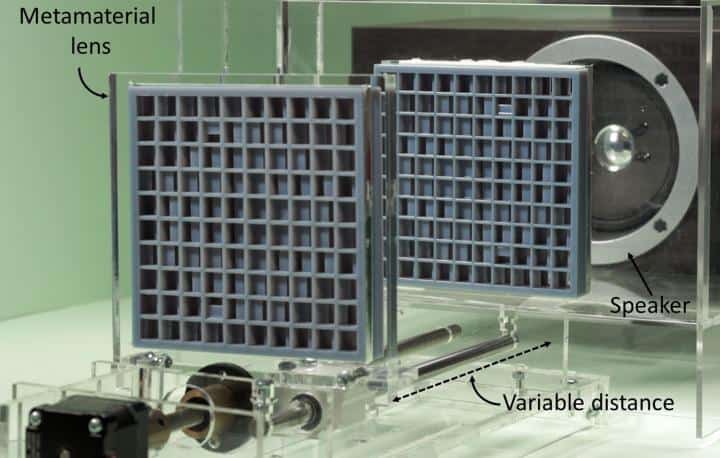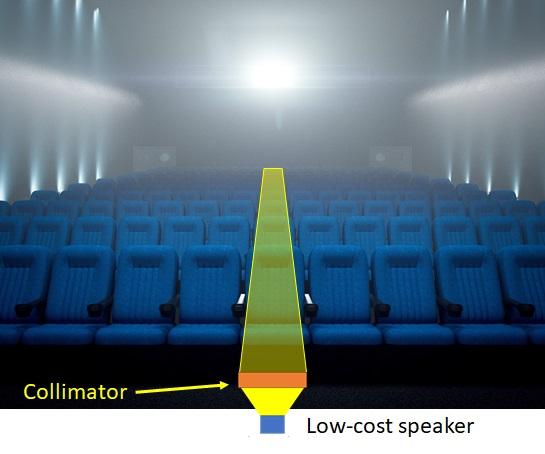Optics researchers have for some years been interested in metamaterials, whose structure allows them to manipulate light passing through them. Such materials have been used to create "invisibility cloaks" and other strange effects. Engineers at the universities of Sussex and Bristol have now demonstrated that similar techniques can be used to sculpt sound, which they claim could have important implications for entertainment and public communication.

"Acoustic metamaterials are normal materials, like plastic or paper or wood or rubber, but engineered so that their internal geometry sculpts the sound going through,” explained Gianluca Memoli, a lecturer in novel interfaces and interactions at the University of Sussex and leader of the research. “The idea of acoustic lenses has been around since the 1960s and acoustic holograms are starting to appear for ultrasound applications, but this is the first time that sound systems with lenses of practical sizes, similar to those used for light, have been explored."
At a conference on human factors in computing systems in Glasgow, Memoli and colleagues are presenting their research, which involves every day recyclable materials , such as glass, wood and 3D printer plastics, and forms them into modular blocks that can be assembled to form acoustic lenses and devices such as collimators, which can turn the sound from a standard speaker into a directional beam that could reach out to a single person in a crowd. Other possibilities for the technology include using a sound lens as receiver to pinpoint alarm noises, such as signals indicating faults in machinery, or to distinguish between sounds made by an intruder in a house or those made by a pet. It could also be used to create a three-dimensional sound system within a music venue, to ensure that every member of the audience hears the performance at its best.

Team member Letizia Chisari explained further. "In the future, acoustic metamaterials may change the way we deliver sound in concerts and theatres, making sure that everyone really gets the sound they paid for. We are developing sound capability that could bring even greater intimacy with sound than headphones, without the need for headphones.
Such improvements in sound performance have been attempted before, but current surround sound systems in cinemas or concert venues have a very limited "sweet spot" where the optimum acoustic experience can be heard. Anybody outside that sweet spot will not receive the full effect. Earlier generations of acoustic lens only work well at high frequencies, so even their use has not been as effective as hoped. The modular nature of Memoli’s system, the small size of the units and their relatively cheap materials mean that high performance should be available to a much wider range of purchasers, they claim.
Using a single speaker, we will be able to deliver alarms to people moving in the street, like in the movie Minority Report. Using a single microphone, we will be able to listen to small parts of a machinery to decide everything is working fine. Our prototypes, while simple, lower the access threshold to designing novel sound experiences: devices based on acoustic metamaterials will lead to new ways of delivering, experiencing and even thinking of sound,” added team member Jonathan Eccles, an undergraduate at the University of Sussex.




Nanogenerator consumes CO2 to generate electricity
The chemistry seems incredibly complex. When the article came out here in Australia the News report was really funny because they scientist/researcher...